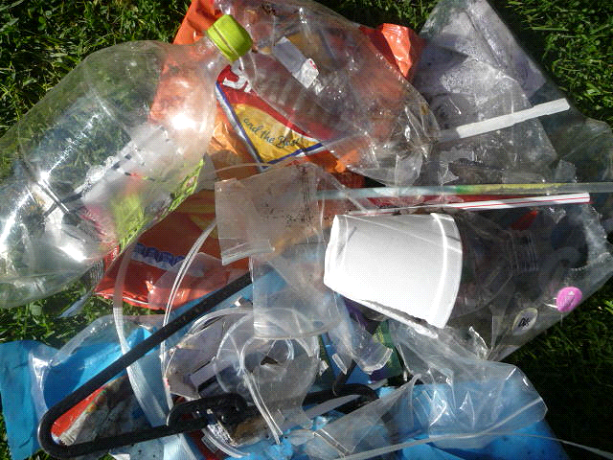Plastic film packaging market in China & India
Posted on February 18, 2014 by DrRossH in Plastic Waste NewsPlastic film packaging market China India.
Sales of the products across the global food packaging market are expected to grow at 5.2% from 2013 to 2018: but increases in China and India and the ‘untapped Asia-Pacific market’ will be much higher.
“The food packaging market is being driven by Asia-Pacific,” he said. “There is a high demand for microwavable food and packaged food. When people had lower incomes, they did not spend on these items. But disposable income is increasing at a rapid rate.” Major sports events in Brazil – the 2014 FIFA World Cup and 2016 Olympic Games in Rio de Janeiro – will boost the market for plastic films and sheets, Chakroborty added. “These will be a big drive in Brazil, and we’re expecting consumption there to increase,” he said. Growth is expected to be much lower in European and north American countries, where there are stricter rules on recycling. Biodegradable products are being chosen instead of oil based plastics.
BOPP Boost
The report says even though polyethylene is used as a key material, polypropylene is becoming the preferred choice for packaging. In particular, BOPP – a type of polypropylene – is growing at a ‘significant rate.’
BOPP film – biaxially orientated polypropylene – is stretched in both directions during manufacture. It is chosen for its flexibility and barrier properties (which block oxygen and water to keep food fresh). Uses include packaging for snack foods, confectionery, meat and poultry, bakery products, frozen foods, and overwrapping for lots of products.
The demand for BOPP has been growing for the last five years and is expected to keep building for the next five years, Chakraborty said.
The global market for plastic films and sheets was estimated at $112.4 bn in 2012, and expected to grow at a CAGR (compound annual growth rate) of 4.4% from 2013 to 2018. The strength of the Asia-Pacific market creates a ‘good outlook’ for the plastic film and sheets industry, the report says.
While these manufacturers see the upside in their sales to be able to make all this extra plastic, we should be looking for ways to reduce plastic packaging by 5.2% per year not increase it. The costs of all this extra plastic waste will be heavy. A lot of it will get loose in the environment and oceans. Are these packaging companies going to help pay for the waste issue costs of their products? Their picking on the lesser developed countries to create an environmental disaster in those countries should ring alarm bells in the rest of the world.

 How many people today grab a takeaway coffee cup from the local cafe to drink on the go? We don’t know, but the number must be enormous.. Most every one of the above have a plastic top that will last 100s of years. Some cafes still use plastic cups that last a similar time. Is 10 minutes of coffee worth 100s of years of trash?
These items can be seen littering our gutters and on our streets all over the place. If they were all cardboard, they would still be littered, but they would, at least, be gone in a short time.
They do not need to be made of plastic.
How many people today grab a takeaway coffee cup from the local cafe to drink on the go? We don’t know, but the number must be enormous.. Most every one of the above have a plastic top that will last 100s of years. Some cafes still use plastic cups that last a similar time. Is 10 minutes of coffee worth 100s of years of trash?
These items can be seen littering our gutters and on our streets all over the place. If they were all cardboard, they would still be littered, but they would, at least, be gone in a short time.
They do not need to be made of plastic.
 On the way home from the gym last week, a distance of about 1 km (1/2 mile), I counted the items of plastic litter on the curb as I walked. In that short distance I counted 63 pieces of plastic litter. Plastic drink bottles, bottle tops, candy wrappers, plastic film, polystyrene fragments etc. That seemed to be a lot to me. I guess it is a generational thing. Our parents would have been horrified to see that amount, whereas it seems to go unnoticed by our youth of today. In another 20 years how many pieces will there be on this stretch, -- 200? What will today’s youth think of that new amount then when they are older? Will their children be so readily accepting of a higher amount of litter?
On the way home from the gym last week, a distance of about 1 km (1/2 mile), I counted the items of plastic litter on the curb as I walked. In that short distance I counted 63 pieces of plastic litter. Plastic drink bottles, bottle tops, candy wrappers, plastic film, polystyrene fragments etc. That seemed to be a lot to me. I guess it is a generational thing. Our parents would have been horrified to see that amount, whereas it seems to go unnoticed by our youth of today. In another 20 years how many pieces will there be on this stretch, -- 200? What will today’s youth think of that new amount then when they are older? Will their children be so readily accepting of a higher amount of litter?
Discussion · No Comments
There are no responses to "Plastic film packaging market in China & India". Comments are closed for this post.Oops! Sorry, comments are closed at this time. Please try again later.